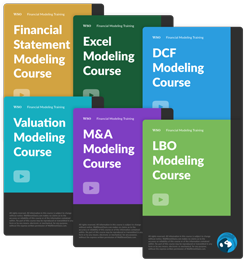How do you quantify risk in real estate deals?
Short of going with a "gut check" this is risky this is not risky based on experience, how do you quantify risk?
I've been working in the industry for a few years and everyone seems to claim better "risk adjusted returns" but I've never seen a good way to quantify this.
At most I've seen someone run a standard deviation analysis or a sharpe ratio analysis on super broad data sets like apartments over 20 years, but it doesn't really quantify risk to any specific deal.



I've thought about this a lot. A risk spectrum that's hard to quantify might be the reason many of us have jobs in real estate the first place. In the securities markets all it takes is someone with a bloomberg terminal to pull up quantified risks for 99% of their potential investments. Real estate as an asset class has so many variables (many of which are tangible and can't easily be analyzed in data sets) and this makes the risk behind each investment so 'case by case.'
Pre-covid, core assets were arguably near securities in terms of ease of quantifying risk, but introducing insane volatility and an upside down office market will change everyone's risk calculations. Any value add style deal will always have a certain element of gut check involved in the risk calculation (until A.I. can properly evaluate every aspect of real estate investments).
How would you quantify risk for core assets pre-covid? What sort of metrics are you looking at?
This is a more surface level answer but hopefully it helps somehow. For example, in shopping center leases, we have exposures through co-tenancy or sales kickout.
Take co-tenancy risk as an example, in the co-tenancy language there is usually/ always a remedy section i.e. what happens to the rent if co-tenancy is triggered. The risk is quantified by the difference between contract rent and remedy rent.
I think what makes this particularly difficult is the difference between asset classes. In office, common methods of measuring risk are weighted average lease term, vacancy %, average lease roll % per year, and % of rent roll with IG credit. 3 of these are literally not even a factor when evaluating multifamily.
I'd love to hear what some of the more experienced monkeys have to say on the topic, especially as it relates to measuring risk across food groups.
TL;DR - Yes, it's a gut check. Claims of "better" risk-adjusted returns are all a load of bologna. Real Estate professionals aren't the best mathematicians, so don't count on fancy metrics to quantify risk - we just see what other successful real estate people are doing/quoting/etc, and use it as a "comp" to attract investment dollars and make money.
I'll start by saying that the Sharpe Ratio, any discussion of Beta, and other risk calculations for real estate projects are seldom used by those at the sponsor-level. Maybe at the Fund level, but I have not heard of it often.
Risk in real estate deals is all about what you, as the sponsor, know, which can be broken down into two categories: (1) your known-knowns, and (2) your known-unknowns (collectively, your "Knowledge Base"). So a Sponsor with a Finance Knowledge Base will have a different measure of risk compared to a Sponsor with Brownfield remediation Knowledge Base. The former might peg a 30%+ required IRR on a brownfield remediation, adaptive reuse project, while the latter only a 22% IRR, based on their knowledge of what all the project entails and what "known unknowns" are out there that could affect financial performance. So yes, it's a gut check. Quantifying risk in real estate in the same manner as you would in equities does not work as will given the illiquid nature of real estate investments. You have daily movement and lower transactions costs that provides the data for calculating such risk metrics in the equities markets, while real estate is a slower process with higher transactions fees.
As an investor/sponsor, you are using your Knowledge Base to compete against the various alternative investment options that an investor has at their disposal (i.e. bonds, commodities, stocks, other real estate investors.... and I guess crpyto). So the quantification of risk in real estate is tied more to the Target Rate of Return for the project's risk & return profile (i.e. core, core plus, value add, opportunistic), selected by (1) comparing alternatives investment options (returns, sentiment, stage of cycle, etc) in other asset classes based on current market conditions, and (2) studying market comparable in the real estate sector, then making a gut decision based on your Knowledge Base.
Different people have attempted to assign various ranges to the above-referenced risk & return profiles, but, from my research, the targeted returns tend to ebb and flow based on what it happening in the broader capital markets, affected by any policy changes enacted. I have heard from a handful of money managers (just anecdotal evidence) of HNW individuals that a rule of thumb they tell their clients is that it does not make sense to invest in stocks over bonds unless you believe that your return will be at least three times (3x) the return of the bond. Real estate investment then tends to demand another liquidity premium on top of the equities premium. So, for example, the 10-year Treasury as of 4/9 was 1.67%. If it takes a 3x return for equities, that's a 5.01% return certain HNW investors will need for their people to invest. To invest in real estate, what's the liquidity premium? That's a judgement call for each investor to make. There is an investor survey that PWC or EY (or maybe both) put out quarterly that gauges investor sentiment. It's a good resource for a gut check on where the market is at. But really, you're just penciling numbers to see what will land based on what (somewhat achievable) rents are out there in the market.
In a nutshell, to quantify risk of one deal, look at the upside and look at the downside, and than make a base case. If your upside is a 20% IRR, your base case is a 15%, and your downside is a 9%, you may say this is a good risk adjusted return. Your upside is high and your downside is you don’t loose money. If your downside case is -3%, you would prob not do the deal bc there’s a decent chance you lose money.
This is basically exactly how we look at it at my firm.
Ea et voluptatibus voluptatem aut consequatur sint. Est reiciendis ad quia quisquam excepturi sunt rerum eum. Repellendus temporibus accusamus quas neque fugiat at et. Et minima aut consequuntur corrupti. Voluptatem deserunt voluptas illum laborum molestiae.
See All Comments - 100% Free
WSO depends on everyone being able to pitch in when they know something. Unlock with your email and get bonus: 6 financial modeling lessons free ($199 value)
or Unlock with your social account...